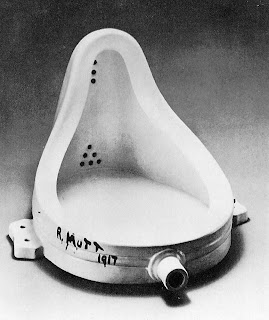COLOUR
Hue - Pure Colour.
Tints - Pure colour with white.
Shades - Pure colour with black.
Above is a colour wheel, this shows colours and their opposites.
Goethe's colour wheel
This is one of the earliest representations of a colour wheel made with watercolours. This colour wheel was created by Goethe. He used his understanding of the light and dark spectra. Goethe also experimented with colour psychology and how they effect individuals. He then used his findings to associate colours with emotion.
Red - Hostile, Anger, Hot
Green - Calming, Peaceful
Blue - Deep, Cold
Yellow - Intellect, Joy
Orange - Brightness, Warmth
Purple - Royalty, Luxury
Black - Dark, Energy
White - Light, Absence, Success
The way we see colour can be affected by the colours accompanying. For example, a Black to white gradient with a solid grey bar across will give the effect that the solid grey bar also has a gradient. This is our eyes and brain getting confused trying to figure out the image. This is called an Optical Illusion.
OPTICAL ILLUSIONS
Optical illusions are images that cause us, the viewer, to perceive an image differently to what is actually correct. There are three types of optical illusions; the first is Literal Optical Illusions, these create images that are different to the ones that make them. The second, is Illusions that affect the eyes and perception. Thirdly, there is Cognitive Illusions, which "play tricks" with the unconscious parts of the mind.
For example, The two lettered squares are identical in colour. However because of the surrounding squares they appear to be different colours. This is proven with the image below the Illusion:
IMAGE ANALYSIS PRESENTATION
Image analysis presentation is how we 'read' or 'interpret' images.
We communicate in a number of ways such as:
Humour and Wit
Shock, Danger and Disgust
Sex
Education
Aesthetics and Beauty
Nostalgia, Sympathy and Empathy
Munch - The Scream
This is an extremely distressing image. The contrasting colours of the red sky and blue sea create and almost visual 'noise' that almost puts the viewer in the place of the subject. The pillars in the background look like figure, and still could be figures (I think it could be an optical illusion to make the viewer think).
Leonardo Da Vinci - The Last Supper
This piece is extremely accurate and has been painstakingly painted to follow a strict grid system. This creates an almost real effect that makes the room appear to carry on, making the viewer feel as if they are a part of the painting. This piece is a 'Fresco' which means it has been painted straight onto a wall.
Magritte - This is not a Pipe
Magritte created this piece to challenge the minds of the viewers. The joke is, that this is not a pipe, it is paint on a canvas.
Otto Dix - Card Players
This piece was part of the Dada movement and shows the horrors and disgusting acts war had upon humanity. The painting shows some disfigured soldiers that are still wearing their medals and uniforms. This was an obvious mock of Patriotism.
Marcel Duchamp - L.H.O.O.Q
This piece by Marcel Duchamp mocks western civilisation and the way they place idols on ridiculous pedestals.
Tracey Emin - My Bed
This piece reflects art in the sense that, each artist will always show a part of themselves in a painting. This piece offers a very abrupt look into the artists life.
Marcel Duchamp - Fountain 1917
I found it extremely hard to interpret this piece And there was not a lot of what I felt, accurate, information so I had to compare most of my information to other resources. The fountain is part of the Dadaist movement and is something called a "Readymade". Many interpret this piece differently. Some believe that it is a metaphorical representation of Dadaism, in the way that a lot of people thought, at the time, dadaism was 'waste'. Others think it represents an Erotic value with the curvature of the piece. Some even believe it portrays characteristics of a sitting Buddha statue. As my research deepened, I discovered that more than once some "so called" members of the dada movement had tried urinating in the piece while it was on display in an exhibition.
I couldn't find much information on the origin of the signature on the side of the piece but, according to some, this is a play on the word "Mott" because the toilet was made by a company named "Mott Works" but this was instantly dismissed because personal accounts of people who have met Duchamp said he was notorious for misleading the public in interviews.
The Fountain revolutionised what "Art" was. No longer were the perfectly painted landscapes and portraits the only form of Art. This piece paved way for a new breed of art. This allowed Art to be seen in anything that will allow interpretation.











No comments:
Post a Comment